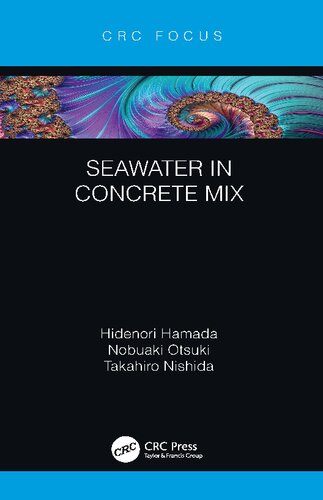

Most ebook files are in PDF format, so you can easily read them using various software such as Foxit Reader or directly on the Google Chrome browser.
Some ebook files are released by publishers in other formats such as .awz, .mobi, .epub, .fb2, etc. You may need to install specific software to read these formats on mobile/PC, such as Calibre.
Please read the tutorial at this link: https://ebookbell.com/faq
We offer FREE conversion to the popular formats you request; however, this may take some time. Therefore, right after payment, please email us, and we will try to provide the service as quickly as possible.
For some exceptional file formats or broken links (if any), please refrain from opening any disputes. Instead, email us first, and we will try to assist within a maximum of 6 hours.
EbookBell Team

4.0
66 reviewsIn the near future, many parts of the world will suffer from a shortage of freshwater. Effective use of seawater in concrete production could therefore become a crucial technology. Seawater in Concrete Mix provides a detailed overview of the fundamental knowledge of concrete engineering that is essential for the usage of seawater-mixed concrete.
According to the worldwide standard for reinforced concrete (RC), freshwater is typically used in concrete mixing rather than seawater. Yet a potential exists for the extensive use of seawater in concrete, especially with the addition of ground granulated blast-furnace slag, fly ash, or other mineral admixtures. The recent trend toward performance-based design makes this alternative more viable.
The text is ideal for graduate students, researchers, concrete engineers, and all civil engineers who deal with concrete for infrastructure.
Hidenori Hamada is Professor of Kyushu University, Japan.
Nobuaki Otsuki is Professor Emeritus of Tokyo Institute of Technology and was Chairman of the JCI Technical Committee on the use of seawater in concrete.
Takahiro Nishida is Senior Researcher of the Japanese National Institute of Maritime, Port and Aviation Technology.